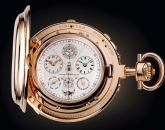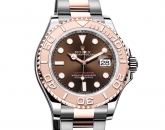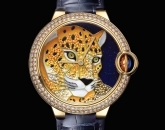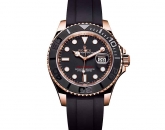
Since then there have been many innovations to the Royal Oak. In 1981, Audemars Piguet presented a perpetual calendar (calibre 2120/2800), which was at the time the thinnest model of its kind in the world. Three years later came the day-date with moon-phase display and, in 1986, a thin quartz model without a seconds hand with the first ever case made of tantalum, a hypo-allergenic material whose blue-grey colour adapts to the climate where it's worn.
In 1993, the brand's design team, in an effort to seek out a younger clientele, developed the Offshore. The first Royal Oak Offshore sent a strong challenge to the craze for extra-thin cases. It was a trendsetter in oversize models that would dominate the market in later years.
The Royal Oak celebrated its 25th birthday with a Grande Complication with perpetual calendar, moon-phase display and minute repeater, with a chronograph and split-second function. The unique piece was created for the founder of Cirque du Soleil, Guy Laliberté.
Another model worth taking note of is the 2007 Royal Oak Offshore, which was created in partnership with Team Alinghi for the America's Cup. It was the first ever watch with a case made from forged carbon – the same material used in modern sailboats. And because the watch was essentially black, it became extremely popular with sports watch fanatics.
Pages
Click here to see the published article.











